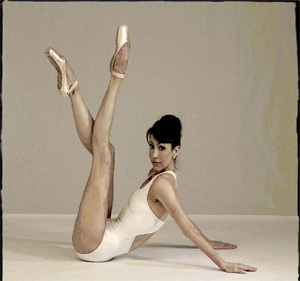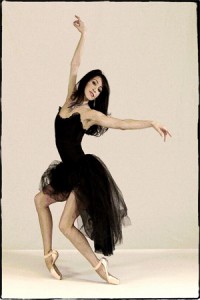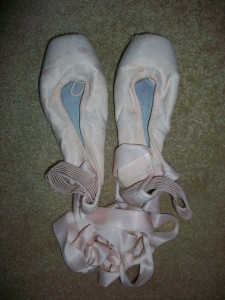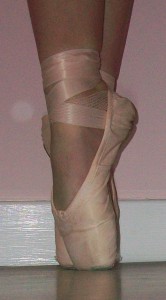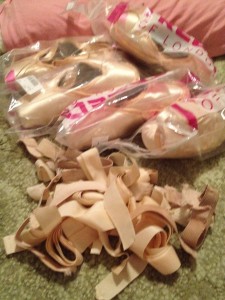by Catherine L. Tully
Pointe shoes have become an integral part of ballet as an art form and, just as each dancer has a unique pair of feet, every ballerina has their own way of preparing these shoes for class or performance. Some slam them in doors to soften them up, while others work on them with little hammers to get the feel “just right”. The break-in method can vary depending on factors such as the brand of shoe and the type of role that is being performed.
We talked a bit at the beginning of the year about these special slippers, and today we’re going in for a closer look…
Rebecca King, corps de ballet dancer with Mimi City Ballet and author of the dance blog Tendus Under A Palm Tree wears Freed pointe shoes. We asked her to share her “secret formula” for getting them ready to wear, and this is what she had to say…
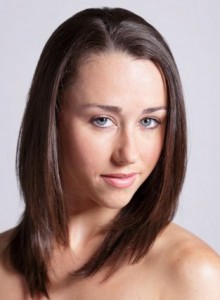
“Preparing a pair of pointe shoes is as much a ritual to a ballerina as it is a necessity. Even though, as professionals, our shoes are shipped to us straight from London, made by hand with love by our chosen “makers” to our exact specifications, many dancers find it necessary to make some extra alterations. It can take dancers years to get their shoes exactly as they want them and some dancers go their entire career in search of the elusive perfect shoe.
A maker hand-builds about 30-40 pairs of shoes at Freed of London every day, each shoe costing around $100. About two-thirds of the shoes produced are created for individual dancer’s specifications. (Find out more about these fascinating pieces of art on Freed’s website.)
I wear a size four, with a double X width, made by my beloved “U” maker. On the bottom of my shoe underneath the width, he stamps his symbol, “U”, as a kind of signature; laying claim to his craftsmanship. The thing I love most about Mr. U is how aesthetically beautiful his shoes are. Something about the way the toe of the shoe is built compliments every wearer’s foot. He is a very important person in my life.
The first thing I do is remove the pesky nail from the heel of the shoe. This nail is meant to secure the paper “shank”, or the inner sole of the shoe, to the outer sole of the shoe. Once it is removed, I cut the paper shank to the shoe’s middle seam, essentially cutting it in half. Because my feet are not very good, this allows the sole of my shoe to bend and lets me point my feet to their full potential. I then glue the end of the shank to the outer sole so it does not move around as I dance.
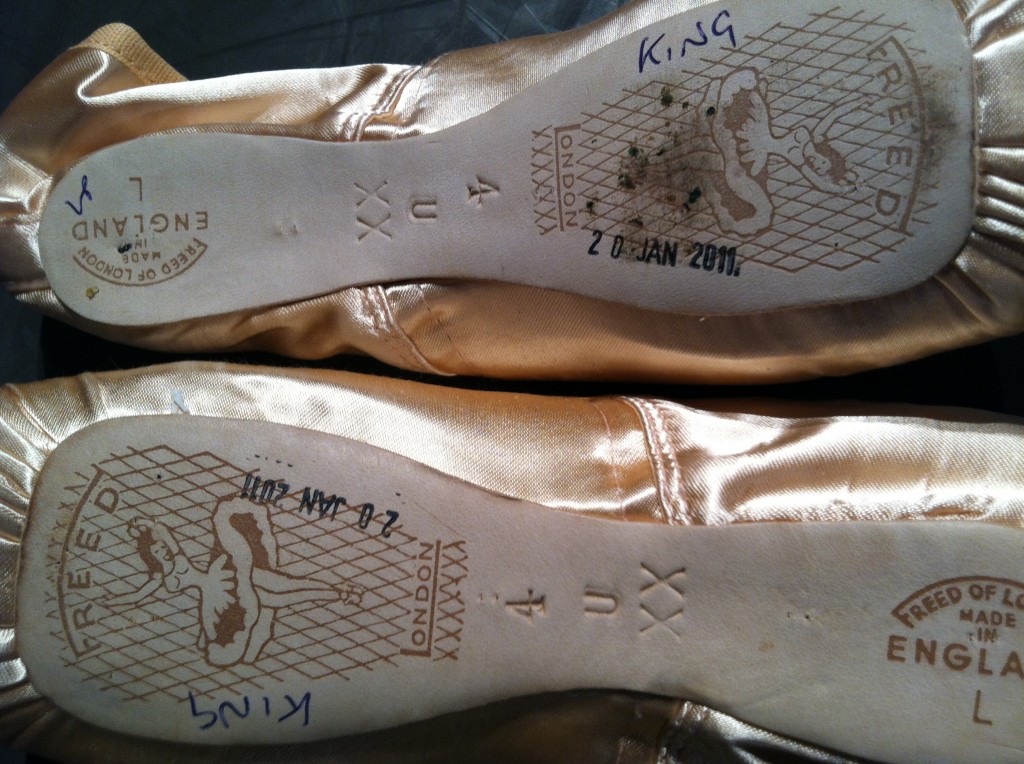
Next, I put super glue in the tips of the shoes. When the tip of the shoe gets soft, it no longer functions like I need it to; this is my ultimate pointe shoe pet peeve. Mr. U even puts an extra piece of burlap in the tip with extra glue upon my request, but I always apply more glue for good measure.
Then I cut the satin off the top of the shoe and quickly darn around the edges. This gives me a little extra support when my shoes start to die, and also ensures that the freshly cut satin stays in place.
Finally, the ribbon process begins. I use pink ribbons secured over crisscrossed thin pink elastic. I prefer the thin elastic, as I don’t feel a lot of pressure on my ankles, while the crisscross restricts my movement laterally, helping to prevent ankle sprains.
Though this is my current process, if you check back with me in two years, I am fairly certain I will have a new procedure, as my system is constantly evolving. But as for now, I feel I can dance my best with a half shank, extra super glue, and Mr. U on my side.”
As Ms. King clearly illustrates, ballerinas have a special relationship with their pointe shoes. However, for ballet companies, the costs associated with keeping the ladies on their toes can be astronomical. According to Miami City Ballet’s website, the average pair of pointe shoes typically only last for one performance.
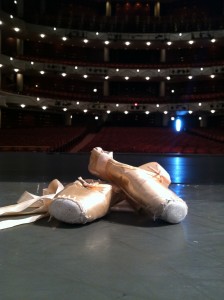
Here is a closer look at what ballet companies across the nation pay to keep the ladies on their toes:
Last year the dancers at Oregon Ballet Theatre used about 1,500 pairs of pointe shoes which added up to $120,000.
Texas Ballet Theatre will spend $80,000 on pointe shoes this year.
Miami City Ballet dancers wear 3,000 pairs of pointe shoes each season for a total cost of $200,000.
Last season Cincinnati Ballet spent $82,000 on pointe shoes for the company.
And New York City Ballet? Their dancers can go through 40 to 50 pairs each performance. This means a staggering total of 8,500+ pairs of pointe shoes each year. I don’t even want to do the math on that one. (But according to this article on The Huffington Post, it adds up to $500,000!)





